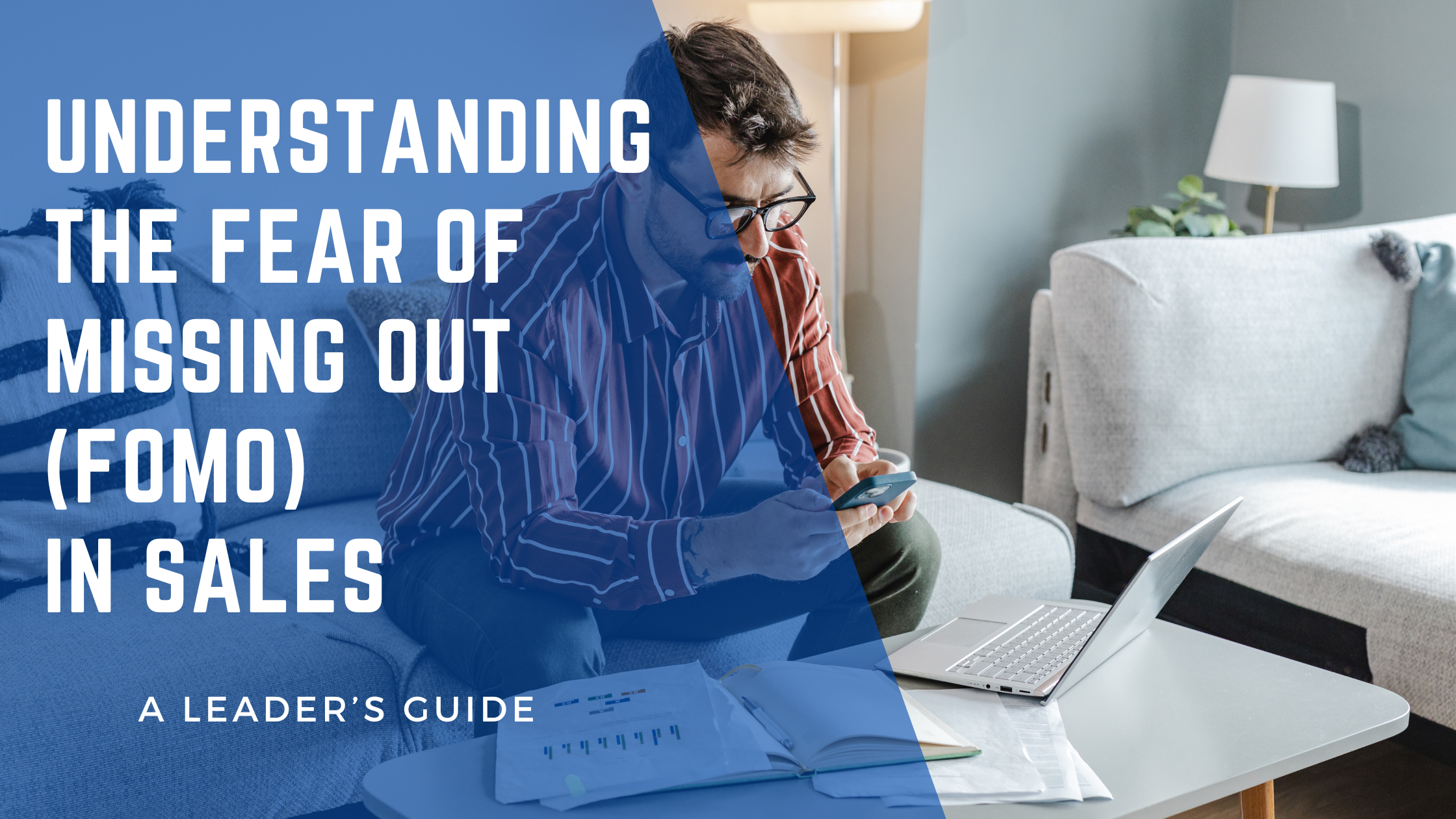Hey there, Nathan Jamail here! Let’s talk about one of the most powerful psychological triggers in sales—FOMO (Fear of Missing Out).
We’ve all felt it before. You’re scrolling through social media, and you see that limited-time deal, the exclusive event invite, or that last available spot in a training program, and suddenly… you feel the urge to act right now. That’s FOMO at work!
But FOMO isn’t just about marketing gimmicks—it’s a real, psychological driver that influences buying decisions across every industry. The trick is learning how to use FOMO in a way that is authentic, ethical, and effective—not pushy or manipulative.
So, let’s break it down. What is FOMO in sales, how does it work, and how can you use it to create urgency without coming across as desperate or sleazy? Let’s dive in!
What is FOMO and Why Does It Work in Sales?
FOMO is that nagging feeling that you’re about to miss out on something valuable—whether it’s a deal, an opportunity, or an experience. It’s the reason we:
- Snag that last-minute flight deal before it disappears
- Sign up for a webinar because there are only “5 spots left”
- Buy the latest gadget because everyone else seems to have it
In sales, FOMO works because people hate feeling like they’ve missed out on something beneficial. It creates urgency, encourages action, and keeps potential buyers from endlessly delaying decisions.
But here’s the key: FOMO must be genuine. If people sense that you’re faking urgency or using high-pressure tactics, it backfires and hurts trust.
5 Ways to Use FOMO Authentically in Sales
Scarcity: Limited Availability Creates Urgency
People naturally place higher value on things that are scarce. If something is limited in quantity, time, or access, it feels more desirable.
How to Use It:
- Highlight real inventory limits: “Only 3 spots left in our coaching program!”
- Use deadlines: “This pricing is only available until Friday!”
- Showcase exclusivity: “This offer is only available for our VIP members.”
Pro Tip: Scarcity only works if it’s real. If you say “Only 3 spots left” but continue selling after those spots are “gone,” you’ll lose credibility fast.
Social Proof: Show That Others Are Acting
Ever noticed how when people see others buying, booking, or signing up, they want to do the same? That’s social proof at play. People feel safer making decisions when they see that others are already taking action.
How to Use It:
- Share testimonials and success stories from past clients.
- Highlight the number of people who have already purchased: “500+ leaders have joined this program!”
- Show engagement: “We’re almost sold out—so glad to see so many businesses taking action!”
Pro Tip: Video testimonials work even better than written ones. When prospects see real people sharing their experiences, the FOMO factor increases!
Exclusive Offers: Make It Feel Special
When something isn’t available to everyone, it feels more valuable. Creating exclusive deals makes people feel like they’re getting a VIP opportunity that others won’t get.
How to Use It:
- Offer early access to new products/services.
- Create a VIP list for special discounts.
- Provide limited-edition
products or packages.
Pro Tip: Don’t overuse “exclusive” offers. If everything is exclusive, nothing is. Make sure your VIP perks are actually rare and valuable.
Time-Sensitive Decisions: Encourage Action Now
Ever been on a website where a timer counts down until a deal expires? That’s a classic FOMO technique! When people know they only have a short window to decide, they’re more likely to act fast.
How to Use It:
- Set real deadlines for discounts or bonuses.
- Use flash sales with short timeframes.
- Offer “fast-action” bonuses for those who decide quickly.
Pro Tip: Give people a clear reason for the time limit. Instead of just saying, “This deal expires in 24 hours,” explain why—maybe because spots are filling up, pricing is changing, or resources are limited.
Fear of Future Regret: What Happens If They Don’t Act?
Sometimes, the best way to create FOMO is by reminding prospects what they’ll lose if they don’t act. Nobody likes regret!
How to Use It:
- Paint the picture of what happens if they don’t take action:
“Six months from now, will you be wishing you had taken this step?” - Remind them of past regrets:
“Remember that time you waited too long and missed out? Don’t let it happen again!” - Show the long-term impact:
“The leaders who take action today will be ahead of the competition tomorrow.”
Pro Tip: Use real success stories of people who almost missed out but decided to take action—and how it changed things for them.
FOMO Done Right: Keep It Ethical & Honest
FOMO is a powerful tool, but it should always be used ethically. If you create false urgency, fake scarcity, or misleading tactics, you’ll lose trust, and trust is everything in sales.
Here’s the right way to use FOMO:
- Make sure your scarcity is real (limited spots should actually be limited).
- Be transparent about your deadlines and why they exist.
- Focus on value first, then use FOMO to encourage action.
Remember, the goal isn’t to trick people—it’s to help them make a decision they’ll thank you for later.
Final Thoughts: Use FOMO to Inspire Action, Not Pressure Buyers
FOMO isn’t about manipulating people—it’s about helping them take action on opportunities that will benefit them. The key is using authentic urgency, real scarcity, and social proof to encourage prospects to move forward with confidence.
So, here’s my challenge to you:
- Take a look at your sales process.
- Find one way to authentically incorporate FOMO into your strategy.
- Watch how it increases engagement and action!
When done right, FOMO isn’t just a sales tactic—it’s a way to create excitement, urgency, and momentum. So go out there, use it ethically, and watch your sales soar!






